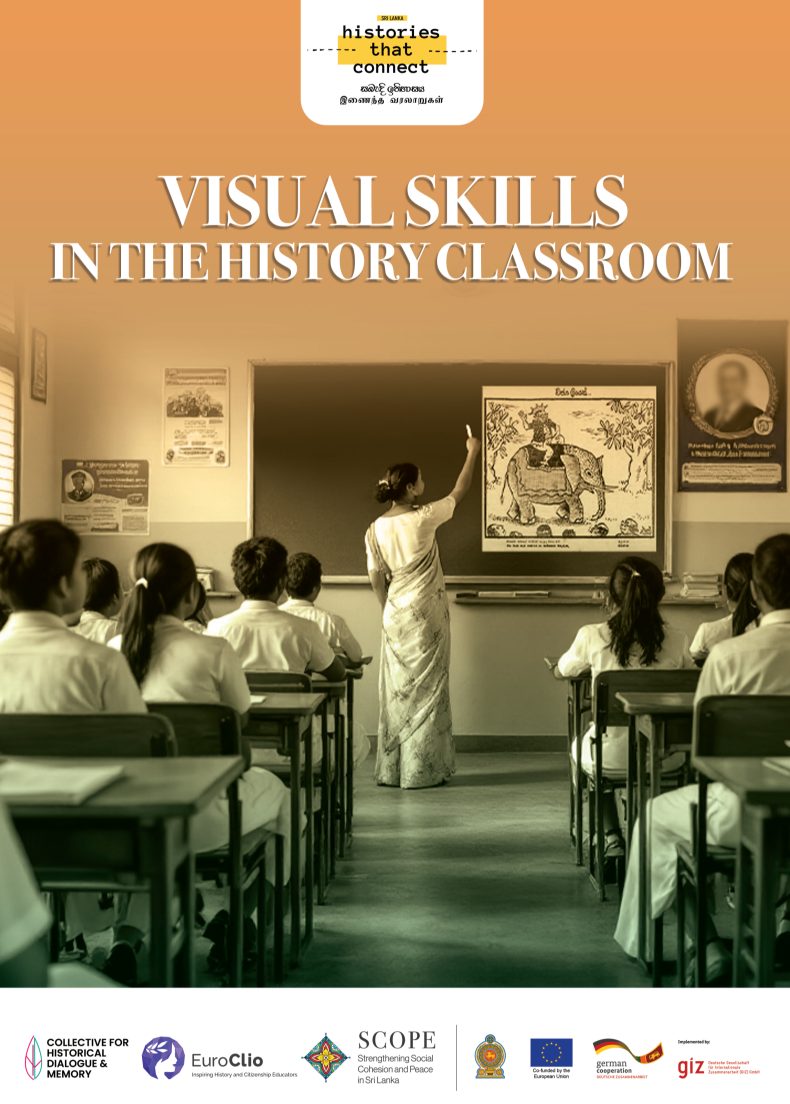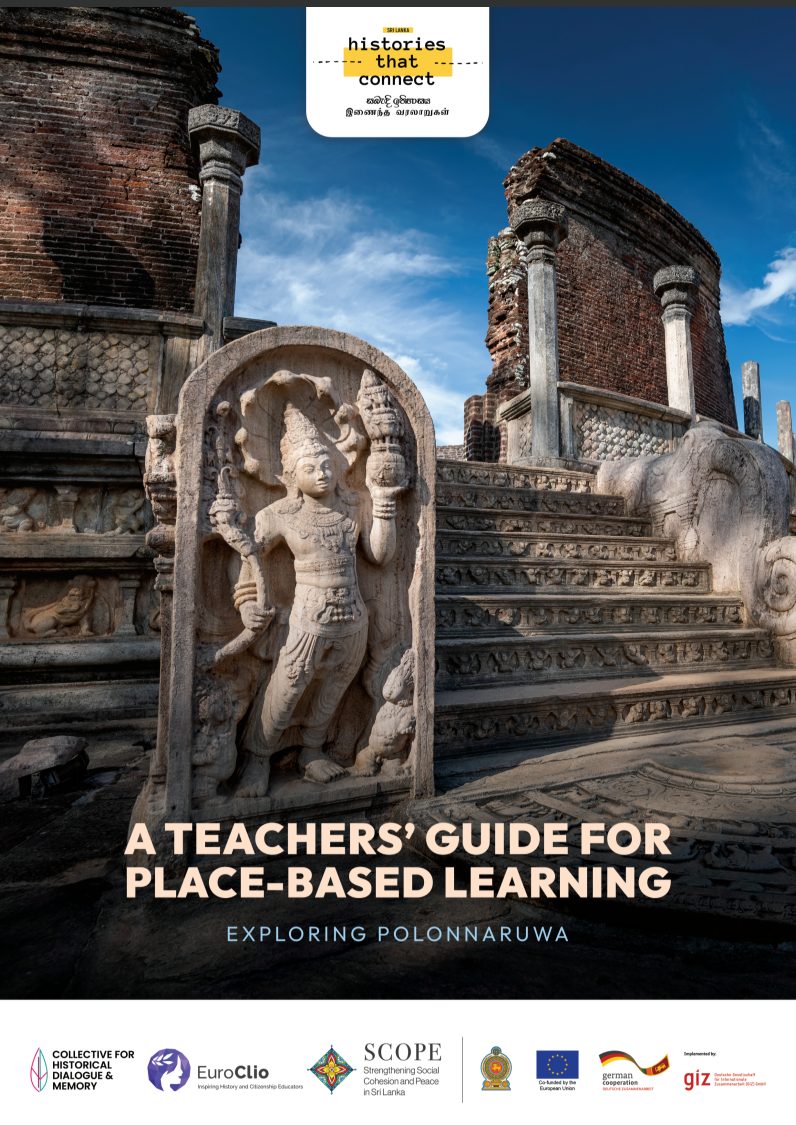The project was part of an initiative to improve and change Dutch history education. The key aim of implementing the historical timeline was to improve the understanding of historical time of pupils aged 6 to 12. The timeline further serves as a constant point of reference, and as a tool. It has layers that correspond to stages of development. De Groot-Reuvekamp’s research draws from experiences in England, where the history curriculum starts earlier, from the age of 5. She compared Dutch and English curricula and she developed a teaching approach (Timewise) in which timelines were used consistently. As a result pupils’ understanding of historical time improved significantly. De Groot-Reuvekamp published several articles about her research.
The Practice
The practice has a direct impact on teachers, who are trained with the new methodology. However, its final target group consists of pupils aged 6 to 12.
The practice was created to tackle an important problem in primary education in the Netherlands: the lack of understanding of historical time. Teachers applying the practice are provided with a large classroom timeline, as well as with a digital timeline that can be used on an interactive whiteboard, with a variety of pictures that students can sequence on the timeline themselves, touching and dragging them around on the whiteboard.
Both versions of the timeline consist of three layers: (1) for very young children, accounting for a division of time in four sections: the longest ago, very long ago, long ago, our times; (2) for children a bit older, with six eras: Hunters and Farmers, Roman Times, Middle Ages, Era of Steam Engines, Era of the World Wars, Era of Television and Computer; (3) for oldest children, with the ten eras of the Dutch history curriculum.
Layers and their visibility are really important, because these allow the teachers to adjust the timeline not only according to the age and development of the pupils, but also according to the specific needs of their students, relating to specific parts of the curriculum.
Furthermore, the presence of the classroom timeline serves as a framework which is always visible. Additionally, the fact that each era is associated to a symbol, is really helpful for students who need to relate phenomena, persons, and events to eras. This is especially true for all those pupils who need structure to learn.
Together with the timelines, which were the main instrument for the application of the methodology, teachers were also provided with lesson plans, listing the objectives for the lessons; an overview of pupils’ development in the understanding of historical time; background information on the main characteristics of the ten eras; and visual and audio materials they could use throughout the lesson. These educative curriculum materials were meant to support teachers in their teaching and learning.
Obstacles and lessons learned
At the beginning of the implementation of the methodology, Marjan de Groot-Reuvekamp encountered three main obstacles: (1) the difficulty in convincing school managements to implement the methodology in the classroom; (2) the difficulty in finding teachers willing or able to participate in the research, due to the fact that they had busy schedules, and the focus on literacy and number literacy in primary schools, which often leaves less time for other subjects such as history.
The obstacles were slowly overcome, thanks to the fact that highly motivated teachers showed willingness to implement the methodology in their classroom, and to the fact that children’s knowledge of historical time did actually improve thanks to the use of layered timelines.
One of the most relevant lessons learned through the implementation of this practice is that the highest student learning gains were reached by teachers who successfully implemented the instructional behavior aimed at, while using the educative curriculum materials. The clear explanation of the Timewise materials during the training seemed to have enabled the teachers to implement Timewise according to the prescriptions and strategies. The curriculum materials offered teachers choices in teaching methods and learning activities as long as they worked on reaching the objectives and used the timeline.
Teachers were trained on how to apply the methodology for eight hours (two trainings of four hours), in which the focus was on a clear explanation of the curriculum materials and how to use these in the classroom.
The effect of the practice
Through conducting pre- and post-tests, de Groot-Reuvekamp was able to show that the Timewise had a significant effect on pupils’ understanding of historical time. Furthermore, the practice itself revealed interesting conclusions related to which ingredients of the training and the implementation have contributed to the success of Timewise. These results and other parts of the research that Marjan de Groot-Reuvekamp conducted have been published in several articles, which you can find in the section ‘additional sources’ of this post.
About the interviewee
Marjan de Groot-Reuvekamp (the Netherlands) works since 2006 as a teacher trainer for History in primary education at the Fontys Hogescholen in ‘s-Hertogenbosch. Her work consists mainly of providing history modules, and supervising internships in primary schools in the region. Alongside her teaching she runs a number of coordinating tasks in her University. From 2000 to 2001 she was seconded to the Historical Commission (Commission de Rooy) to propose a design for a longitudinal curriculum for History in primary and secondary education. This proposal of the ten eras is currently being implemented in primary and secondary education in the Netherlands.
Background to the project
The methodology presented in this practice was developed by Marjan de Groot-Reuvekamp within the framework of her PhD “improving the understanding of historical time of pupils aged 6 to 12 years”, carried out at the University of Amsterdam while working at Fontys University of Applied Sciences.
The methodology was tested in the Noord-Brabant region, where teachers have been trained on how to use such methodology within their classrooms, in partnership with Fontys Teacher Training.
The project was initiated by Marjan de Groot-Reuvekamp. Partners were Fontys University of Applied Sciences, the University of Amsterdam, the Ministry of Education, and Netherlands Organization for Scientific Research (NWO).
Additional information
The methodology Marjan de Groot-Reuvekamp developed was based on the use of Timewise, a curriculum intervention that focuses on the understanding of historical time, and on a consistent use of timelines.
Some of the used teacher material, as well as a more thorough explanation of how to use Timewise, can be found at the following link:
http://www.historischtijdsbesef.nl/en/
An overview of the articles and scientific papers relating to this practice is available at:
http://www.historischtijdsbesef.nl/en/publicaties/
Additional resources
De Groot-Reuvekamp, M., Ros, A., & Van Boxtel. (2017). “Everything was black and white . . .” Primary school pupils’ naive reasoning while situating historical phenomena in time. Education 3-13: International Journal of Primary, Elementary and Early Years Education. Advance online publication http://dx.doi.org/10.1080/03004279.2017.1385642
De Groot-Reuvekamp, M., Ros, A., & Van Boxtel. (2017). Improving elementary school students’ understanding of historical time: effects of teaching with “Timewise”. Theory & Research in Social Education. Advance online publication
http://dx.doi.org/10.1080/03004279.2017.1385642
De Groot-Reuvekamp, M., Ros, A., Van Boxtel, C. & Oort, F. (2017). Primary school pupils’ performances in understanding historical time. Education 3-13: International Journal of Primary, Elementary and Early Years Education, 45(2), 227-242.
De Groot-Reuvekamp, M. J., Van Boxtel, C., Ros, A., & Harnett P. (2014). The understanding of historical time in the primary history curriculum in England and the Netherlands. Journal of Curriculum Studies, 46(4), 487–514.
De Groot-Reuvekamp, M., Ros, A., & Van Boxtel. (submitted). A successful professional development program in history: what matters?
De Groot-Reuvekamp, M., Ros, A., Van Boxtel, C. & Oort, F. (2017). Primary school pupils’ performances in understanding historical time. Primary first. The journal for primary schools, 18, 25.
De Groot-Reuvekamp, M., & Harnett, P. (2016). How do pupils understand historical time? Some evidence from England and the Netherlands. Primary History 73, p. 6-9.
Written by Alice Modena (EuroClio) based on an online interview with Marjan de Groot-Reuvekamp (Fontys University of Applied Sciences, University of Amsterdam in ‘s-Hertogenbosch and Amsterdam), on 13 January 2017.





